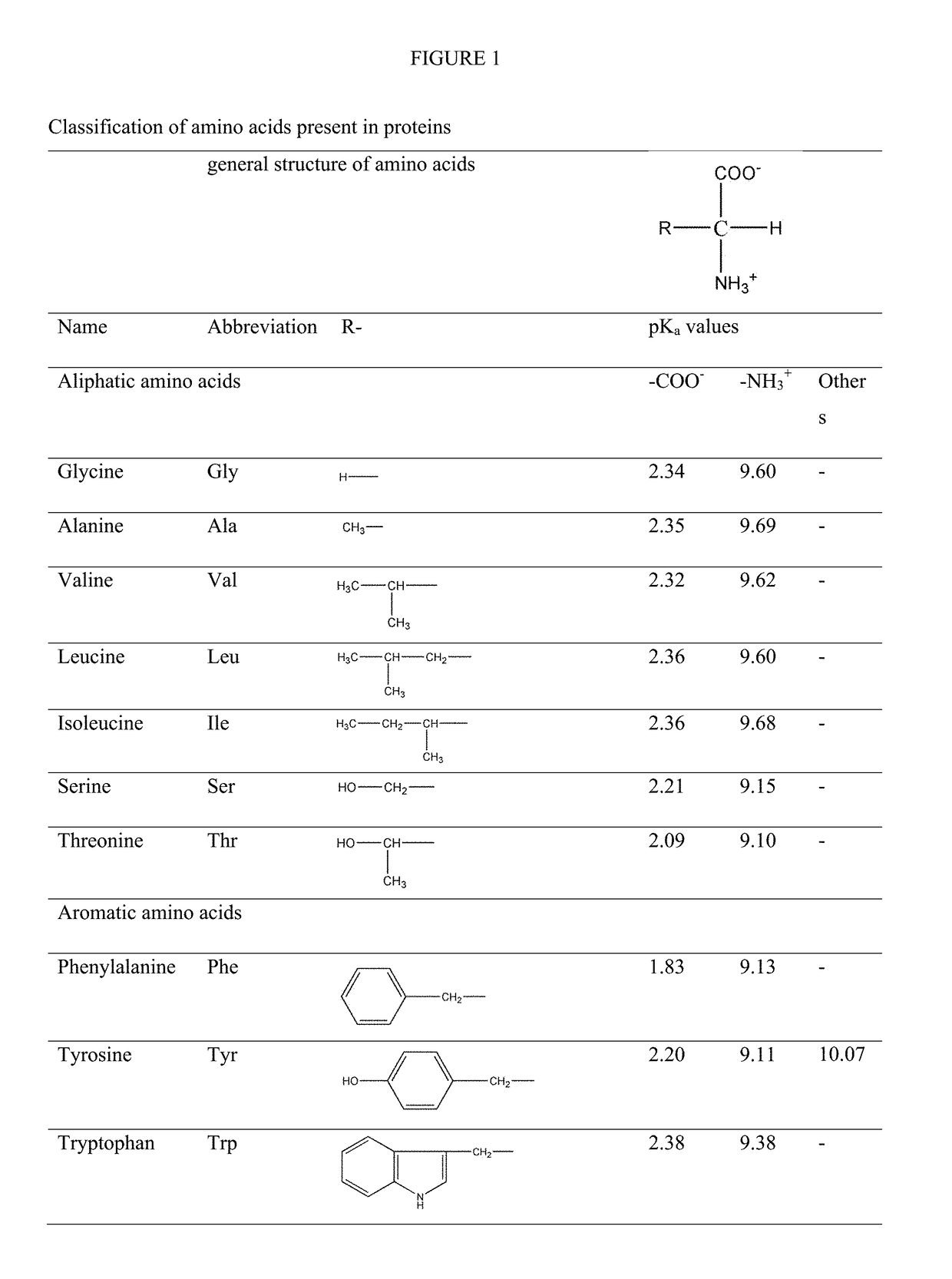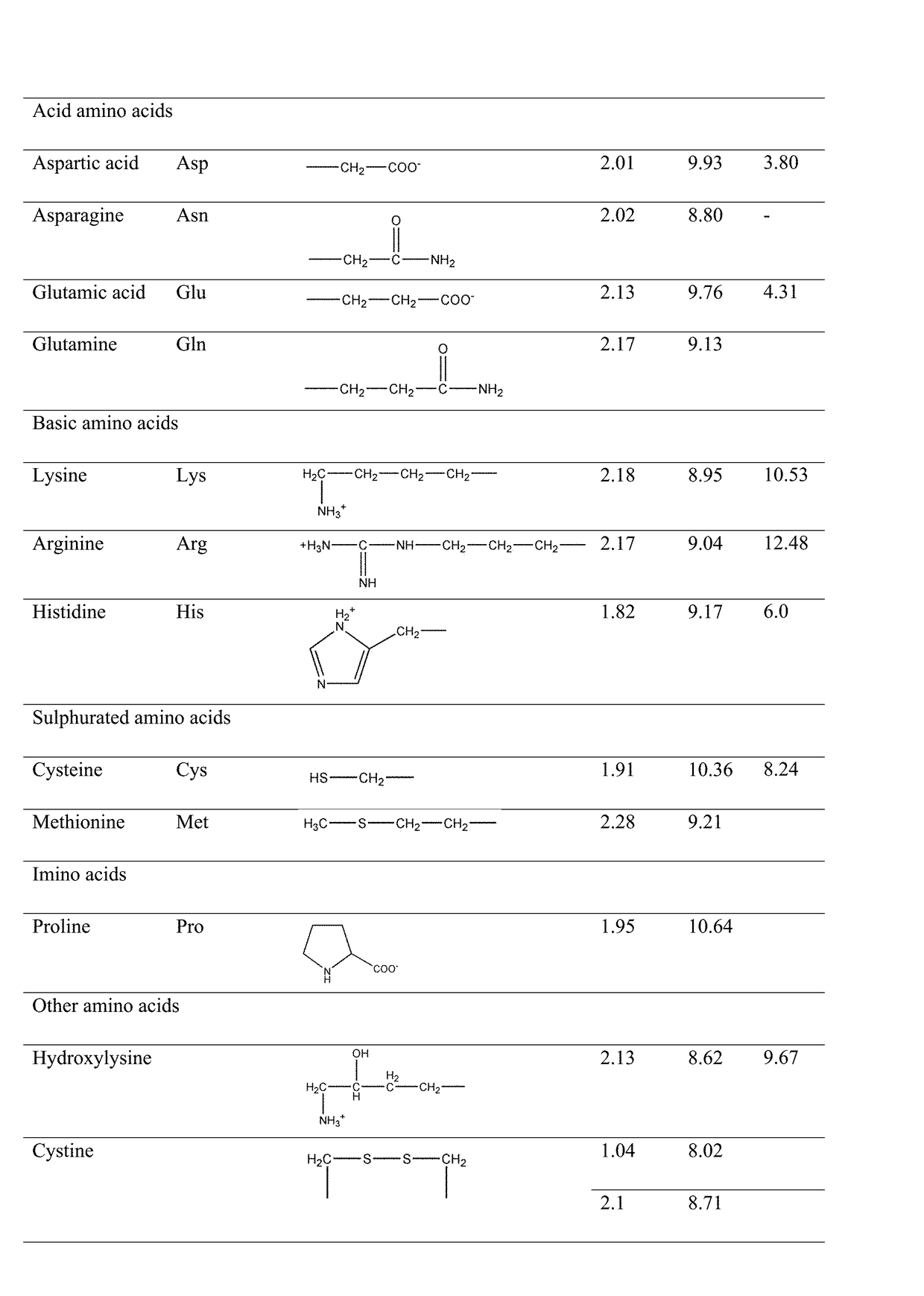Modified release orally administered amino acid formulations
- Summary
- Abstract
- Description
- Claims
- Application Information
AI Technical Summary
Benefits of technology
Problems solved by technology
Method used
Image
Examples
example 1
Exemplary Amino Acid Mixtures for Phenylketonuria
[0153]Table 1 lists four separate representative amino acid mixtures for the dietary management of phenylketonuria, on a percentage basis.
TABLE 1ABCEssential Amino AcidsL-Isoleucine5.117.185.11L-Leucine9.1812.909.18L-Lysine HCL7.3910.395.911L-Threonine3.85.345.28L-Tryptophan1.682.361.68L-Valine6.398.986.39L-Methionine2.042.862.04L-Histidine HCl3.042.3583.041L-Arginine6.144.7646.14Total Ess AA41.7054.76444.77Non-Essential Amino AcidsL-Alanine6.04.6656.0L-Aspartic Acid9.187.1229.20L-Cystine2.031.572.03L-Glutamine12.499.69112.49Glycine4.483.474.48L-Proline7.215.5947.21L-Serine5.94.575.9Taurine0.3000.2320.25L-Tyrosine7.515.827.51L-Carnitine0.160.1240.16Total Non-Ess AA58.3045.23655.23Total AA1001001001weights based on the free base
example 2
Exemplary Powder Formulations and Manufacturing Process
[0154]The following table describes formulations of five separate products containing 18 amino acids (excluding Methionine) using Plasdone K26 / 32 as a binding agent and a taste masking agent (Products 2, 3, 4, and 5). The reference formulation (Product 1) is without Plasdone K26 / 32 and without flavors.
TABLE 2aComposition of Products 1, 2, 3, 4 and 5ProductProductProductProductProduct12345ComponentgggggL-Alanine5.2405.2405.2405.2405.240L-Arginine6.1406.1406.1406.1406.140L-Aspartic Acid9.1809.1809.1809.1809.180L-Cystine2.0302.0302.0302.0302.030L-Glutamine12.49012.49012.49012.49012.490Glycine4.4804.4804.4804.4804.480L-Histidine HCl3.0403.0403.0403.0403.040L-Isoleucine5.1105.1105.1105.1105.110L-Leucine9.1809.1809.1809.1809.180L-Lysine HCL7.3907.3907.3907.3907.390L-Proline7.2107.2107.2107.2107.210L-Serine5.9005.9005.9005.9005.900Taurine0.1880.1880.1880.1880.188L-Threonine4.5404.5404.5404.5404.540L-Tryptophan1.6801.6801.6801.6801.680L...
example 3
Taste Testing
[0170]On the final formulations reported in Example 2 (Products 8, 9, 10 and 11), the following trial was performed in 6 healthy adults. The results reported are average values:
TABLE 3Results of Taste TestingReferenceMarketedProductProductProductProductProduct891011Product in Yogurt withbanana flavor:ODOR4.254.6———TASTE3.754.6———Persistency (bad taste32.2———in the mouth)Product in Orangejuice:ODOR45———TASTE3.254.125———Persistency (bad taste2.51.75———in the mouth)Product in pressedBananaODOR3.55———TASTE14.375———Persistency (bad taste2.752.25———in the mouth)Product dispersed inWater:ODOR2.4—4.34.84.3TASTE0.8—3.93.55Persistency (bad taste4.6—2.421.4in the mouth)Dispersibility24444Legend:Odor / Taste: 0 = bad 5 = goodPersistency (bad taste in the mouth): 0 = low persistency 5 = long persistencyDispersability: 0 = bad 5 = good
[0171]As the foregoing data shows, the formulations of the present invention are better than the Reference Marketed Product and better than the formulati...
PUM
| Property | Measurement | Unit |
|---|---|---|
| Temperature | aaaaa | aaaaa |
| Fraction | aaaaa | aaaaa |
| Fraction | aaaaa | aaaaa |
Abstract
Description
Claims
Application Information
 Login to View More
Login to View More - R&D
- Intellectual Property
- Life Sciences
- Materials
- Tech Scout
- Unparalleled Data Quality
- Higher Quality Content
- 60% Fewer Hallucinations
Browse by: Latest US Patents, China's latest patents, Technical Efficacy Thesaurus, Application Domain, Technology Topic, Popular Technical Reports.
© 2025 PatSnap. All rights reserved.Legal|Privacy policy|Modern Slavery Act Transparency Statement|Sitemap|About US| Contact US: help@patsnap.com



